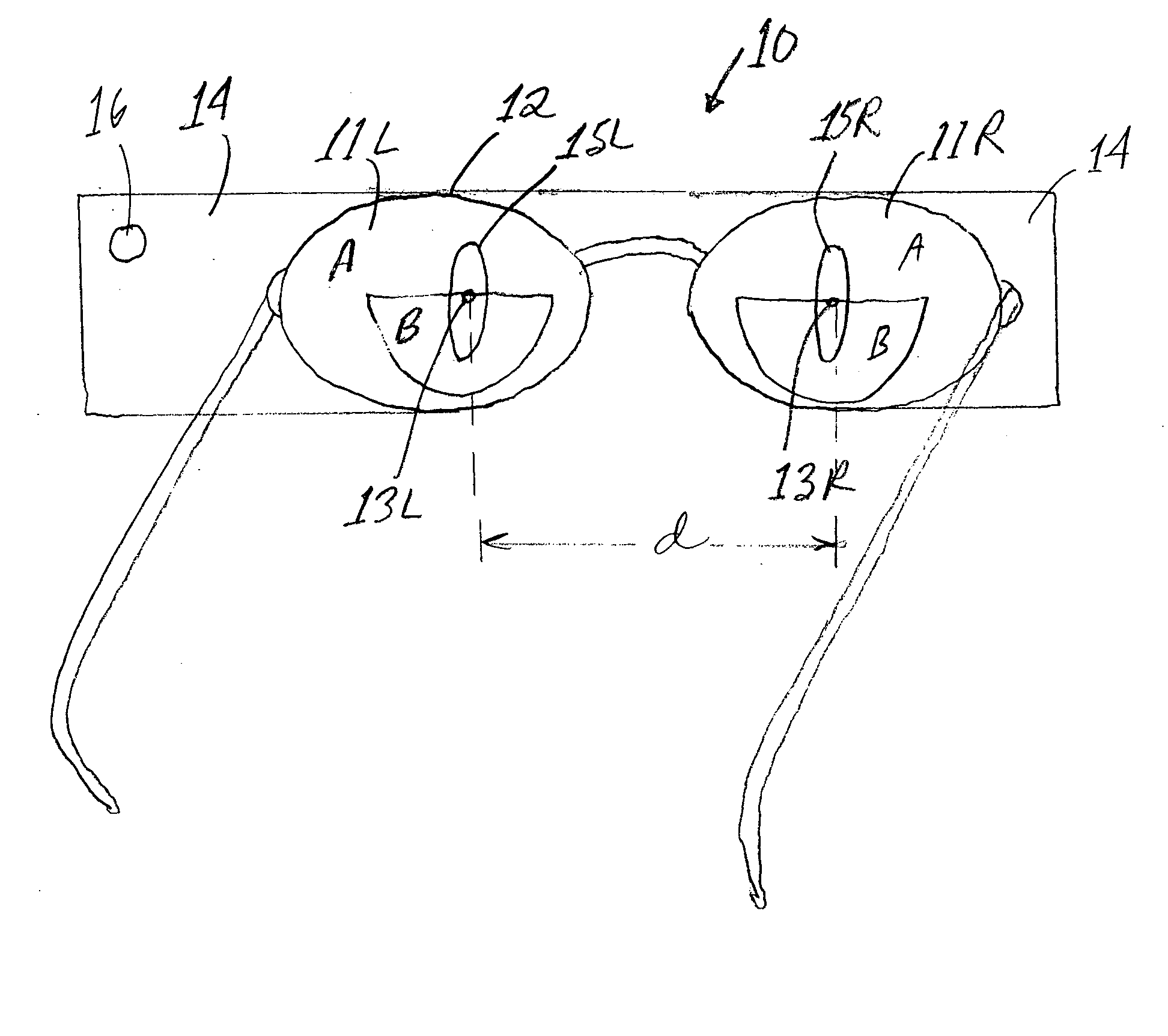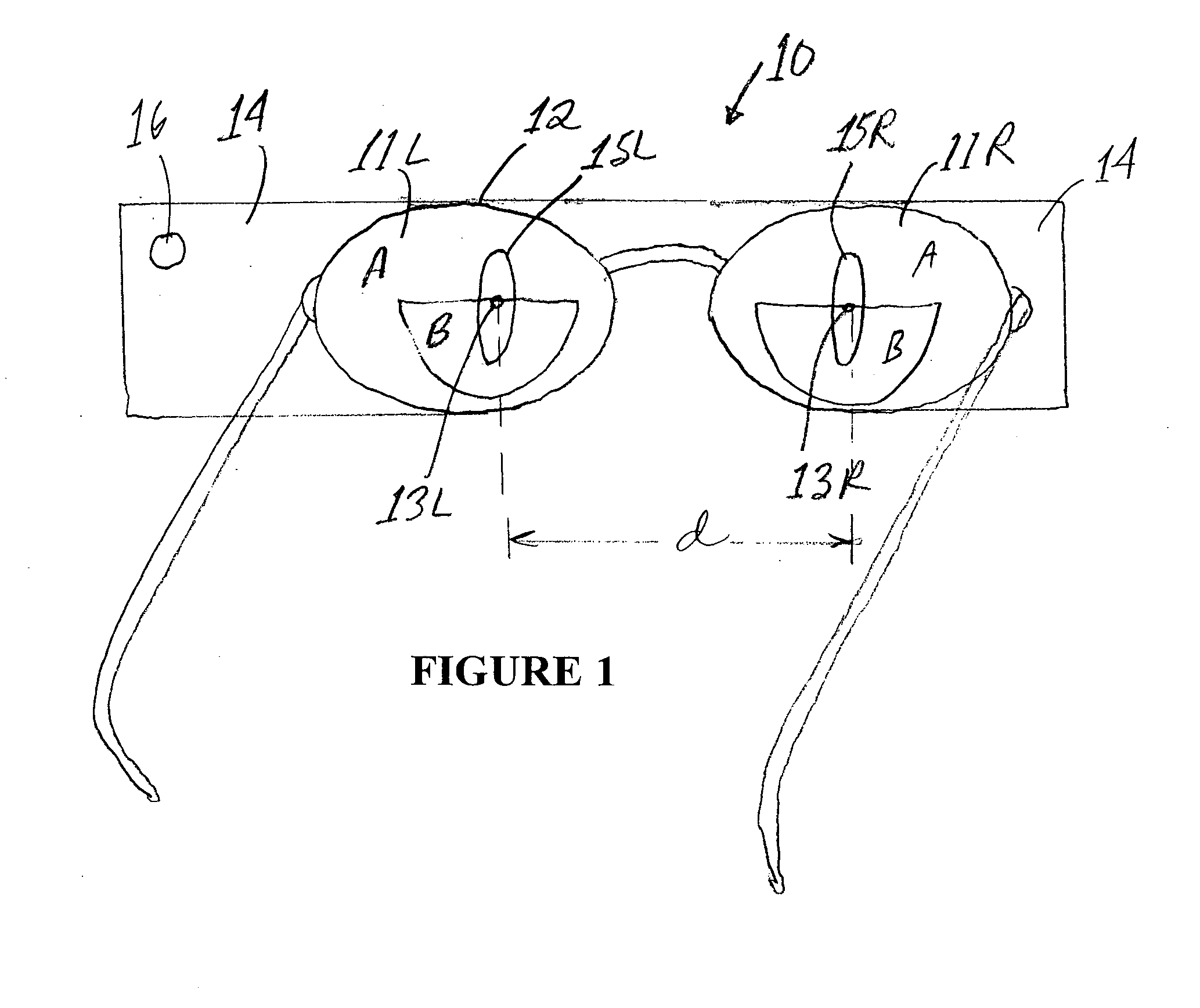Bifocal spectacles for computer users
a computer user and display device technology, applied in the field of bifocal spectacles for computer users, can solve the problems of inability to customize the pupillary distance, inconvenient use, and inability to adjust the relative power of the two segments comprising the lens, so as to reduce or eliminate the occurrence of problems, reduce the effect of eye strain and less eyestrain
- Summary
- Abstract
- Description
- Claims
- Application Information
AI Technical Summary
Benefits of technology
Problems solved by technology
Method used
Image
Examples
Embodiment Construction
[0015] OTC multi-function bifocal computer glasses in accordance with the present invention are designed for that segment of the population that has no need for corrective lenses other than reading glasses, but also desires, in addition, a slightly longer focal distance for visual comfort while at a workstation, computer, reading the newspaper, playing cards, etc. Accordingly, glasses in accordance with the present invention are preferably provided in a variety of powers. The correct power for intermediate viewing distances is indicated at A in FIG. 1. The power of the reading segment B is higher than A and is suitable for close reading distances. Bifocal glasses having a suitable combination of powers is as follows:
Intermediate (A)Segment power (B)Total reading power+0.50+0.75+1.25+0.75+0.75+1.50+0.75+1.00+1.75+1.00+1.00+2.00+1.25+1.00+2.25+1.25+1.25+2.50+1.50+1.25+2.75+1.50+1.50+3.00
[0016] With reference now to FIG. 1, a pair of bifocal glasses 10 has a left lens 11L and a right...
PUM
 Login to View More
Login to View More Abstract
Description
Claims
Application Information
 Login to View More
Login to View More - R&D
- Intellectual Property
- Life Sciences
- Materials
- Tech Scout
- Unparalleled Data Quality
- Higher Quality Content
- 60% Fewer Hallucinations
Browse by: Latest US Patents, China's latest patents, Technical Efficacy Thesaurus, Application Domain, Technology Topic, Popular Technical Reports.
© 2025 PatSnap. All rights reserved.Legal|Privacy policy|Modern Slavery Act Transparency Statement|Sitemap|About US| Contact US: help@patsnap.com


